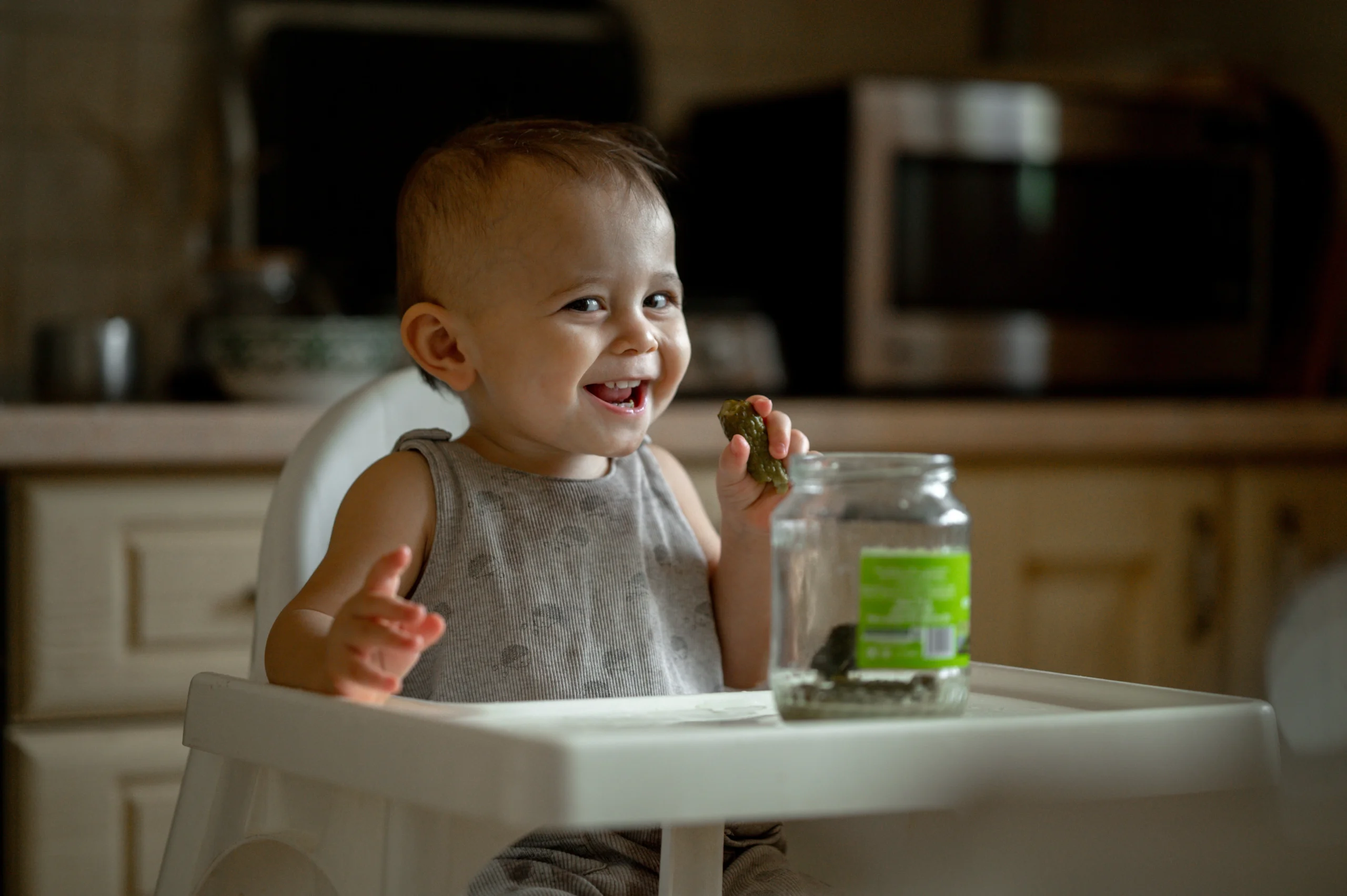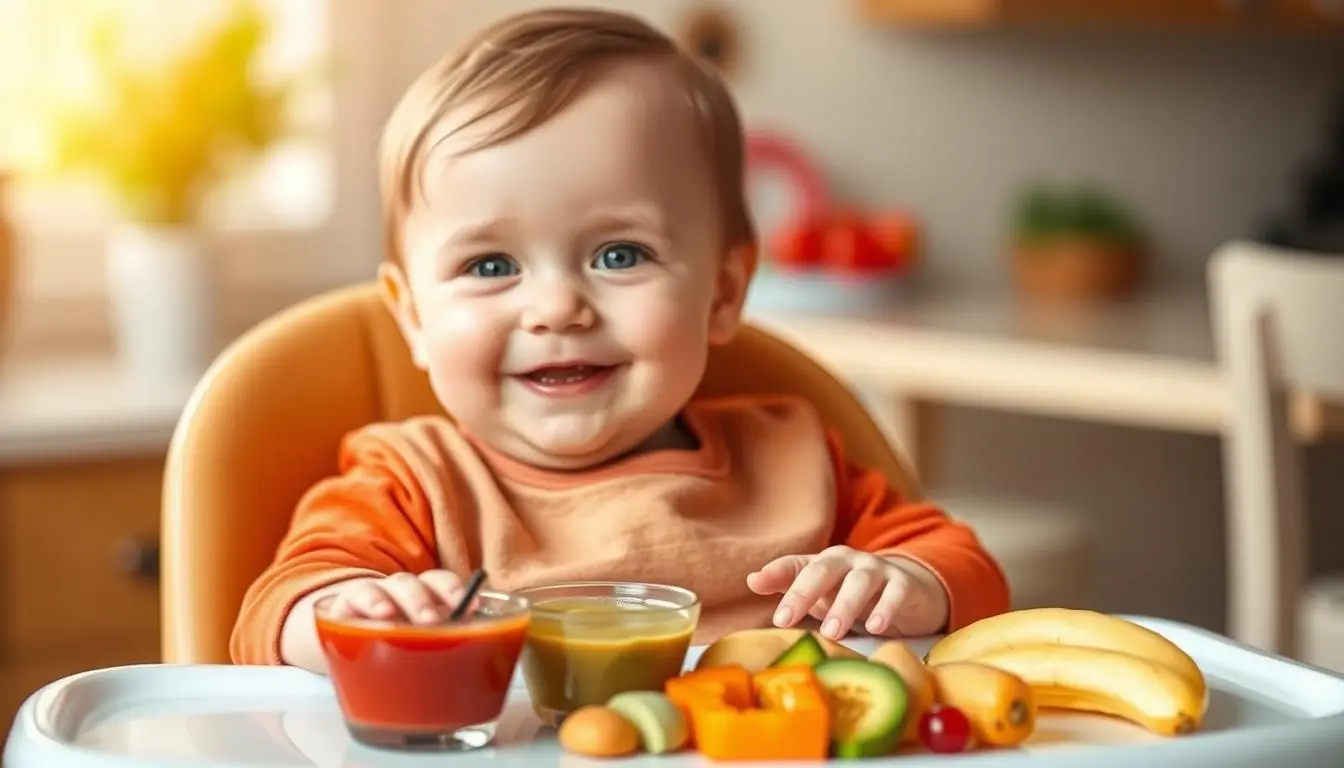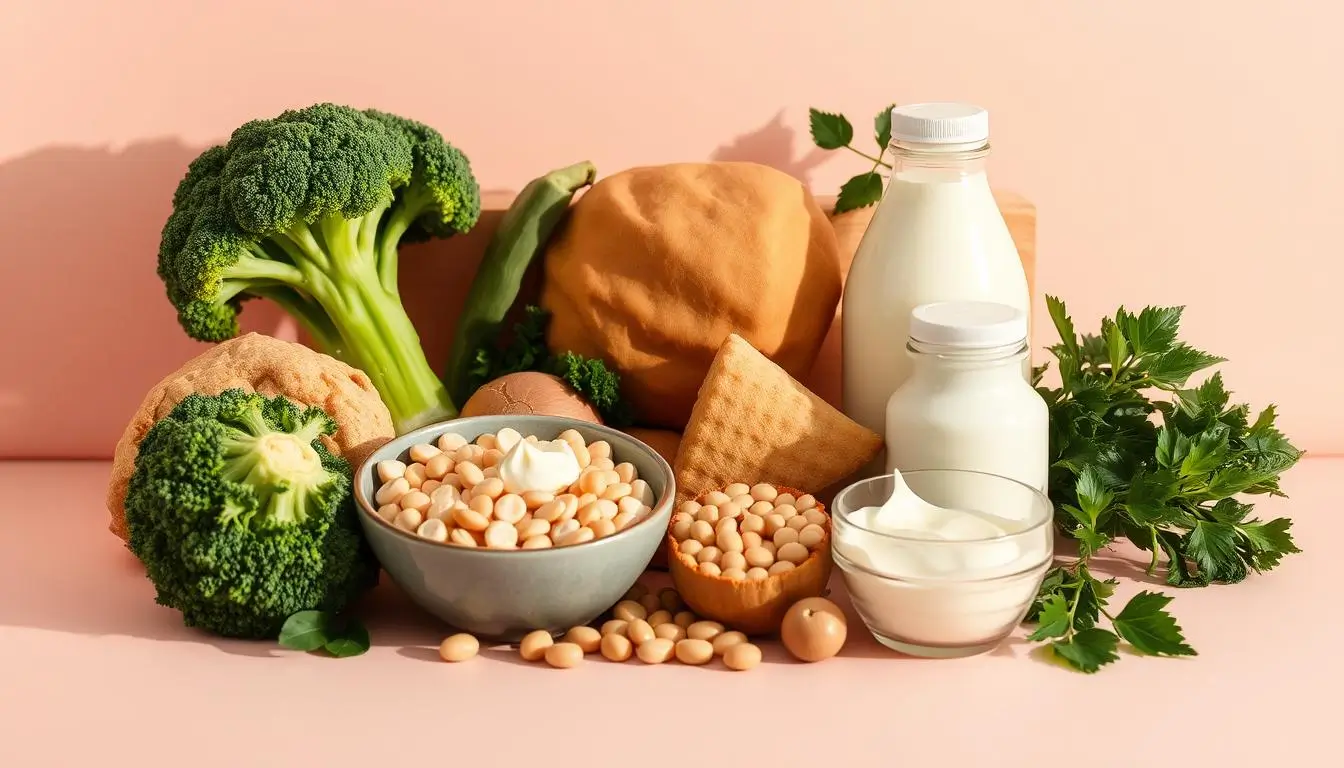Evaluating the Safety of Happy Baby Food: What Parents Need to Know
Introduction to Happy Baby Food and Safety Concerns
The safety of baby food is a top concern for parents, especially with brands like Happy Baby. Recent investigations have raised alarms about toxic heavy metals in many baby food products, including those from Happy Baby. A Congressional report found that Happy Baby’s products contained high levels of heavy metals like arsenic, lead, cadmium, and mercury. For example, inorganic arsenic levels reached 180 ppb, which is 18 times the FDA’s safe limit for bottled water. This alarming data raises serious health concerns, particularly for infants and young children, who are more vulnerable to the harmful effects of these metals.
Parents are understandably worried about whether Happy Baby food is safe for their children. The presence of these heavy metals can lead to severe neurological disorders, including autism, as highlighted by ongoing lawsuits against Nurture Inc., the parent company of Happy Baby. Despite the evidence, no recalls or warnings have been issued, raising questions about the transparency and accountability of baby food manufacturers. The investigation indicated that internal documents from the company showed awareness of these contaminants, yet adequate measures were not taken to reduce their presence in the food products.
ALSO READ: Is Gerber Baby Food Safe in 2024? Expert Insights and Parental Guidance
In light of these findings, many parents are turning to alternative brands that are perceived to have cleaner ingredient profiles. Options like Serenity Kids and Once Upon a Farm are gaining popularity as they emphasize organic and less processed ingredients, providing peace of mind for health-conscious parents. As one parent noted in a discussion on What to Expect, choosing brands that prioritize safety and transparency is crucial for ensuring the health of their children.
While Happy Baby markets its products as safe and nutritious, claiming adherence to strict safety standards and rigorous testing, the recent revelations have left many parents questioning the brand’s commitment to their children’s health. The brand’s transparency about sourcing and manufacturing processes is essential for parents to make informed decisions. As the conversation around baby food safety continues to evolve, parents need to stay informed about the latest safety standards and regulations in baby food production to ensure the well-being of their little ones.
Happy Baby: Brand Overview and Commitment to Safety
Happy Baby, produced by Nurture Inc., has become popular among parents seeking nutritious options for their infants and toddlers. The brand emphasizes organic ingredients and adheres to strict safety standards, aiming to provide parents with peace of mind regarding their children’s nutrition. However, recent investigations have raised significant concerns about the safety of Happy Baby products, particularly regarding the presence of toxic heavy metals.
A Congressional report revealed alarming levels of heavy metals such as arsenic, lead, cadmium, and mercury in Happy Baby foods. For instance, inorganic arsenic levels were found to be as high as 180 ppb, which is 18 times the FDA’s maximum safe limit for bottled water. These findings are particularly troubling given that infants and young children are more vulnerable to the harmful effects of these metals, which can lead to severe neurological disorders, including autism. Despite these findings, Happy Baby has not issued any recalls or warnings, prompting parents to question the safety of their products.
In light of these concerns, many parents are encouraged to be vigilant about the brands they choose. Discussions in parenting forums highlight a growing preference for brands perceived to have cleaner ingredient profiles, such as Serenity Kids and Once Upon a Farm, which are often recommended as safer alternatives to Happy Baby. Parents are advised to stay informed about the latest safety standards and regulations in baby food production to ensure the health and safety of their children.
While Happy Baby markets its products as safe and nutritious, claiming to undergo rigorous testing to meet safety requirements, the recent revelations have cast doubt on these assurances. The brand’s commitment to transparency in sourcing and manufacturing processes is crucial for parents making informed decisions about their children’s food. As the conversation around baby food safety continues, it is essential for brands like Happy Baby to address these concerns proactively and ensure that their products meet the highest safety standards.
For more information on the safety of baby food products, you can refer to the What to Expect community discussion and the Happy Baby Organics product page for customer reviews and insights. As parents navigate the complexities of choosing safe baby food, understanding the potential risks associated with heavy metal contamination is vital.
Safety Standards and Regulations in the Baby Food Industry
The safety of baby food is a top concern for parents, especially with brands like Happy Baby. Recent investigations have raised alarms about toxic heavy metals in their products. A Congressional report revealed that Happy Baby baby food, produced by Nurture Inc., contains alarming levels of heavy metals such as arsenic, lead, cadmium, and mercury. For instance, inorganic arsenic levels were found to be as high as 180 ppb, which is 18 times the FDA’s maximum safe limit for bottled water. This poses serious health risks, particularly for infants and young children, potentially leading to neurological disorders, including autism.
Despite these findings, Happy Baby has not issued any recalls or warnings, which has understandably raised concerns among parents about the safety of their products. The ongoing lawsuits against Nurture Inc. highlight the urgent need for stricter regulations and transparency in baby food safety standards. Parents are encouraged to be vigilant about the brands they choose, as many popular brands, including Happy Baby, have been linked to higher levels of toxic metals.
In light of these concerns, it is essential for parents to consider alternatives that prioritize safety. Brands like Serenity Kids and Once Upon a Farm are perceived to have cleaner ingredient profiles and are often recommended by parents seeking safer options. These brands emphasize organic ingredients and avoid harmful additives, ensuring that their products are suitable for infants and toddlers.
While Happy Baby food products are designed with safety and nutrition in mind, adhering to strict safety standards and regulations, the recent findings cast doubt on their safety. The brand claims to undergo rigorous testing to meet safety requirements, and they provide transparency about their sourcing and manufacturing processes. However, the presence of heavy metals in their products raises questions about the effectiveness of these measures.
In conclusion, when asking “is Happy Baby food safe?” it is crucial to weigh the evidence and consider the potential risks associated with heavy metal exposure. Parents should stay informed about the latest safety standards and regulations in baby food production to ensure the health and safety of their children. For more information on the safety of baby food, you can refer to the What to Expect forum, which discusses various brands and their safety concerns.
Ingredient Safety and Nutritional Value of Happy Baby Food
When considering the safety and nutritional value of baby food, many parents are understandably concerned about the ingredients in products like Happy Baby food. Recent investigations have raised significant alarms regarding the presence of toxic heavy metals in various baby food brands, including those produced by Happy Baby. A Congressional report revealed that Happy Baby products contained alarming levels of inorganic arsenic, lead, cadmium, and mercury, with some samples exceeding safety limits set by health organizations. For instance, inorganic arsenic levels were found to be as high as 180 ppb, which is 18 times the FDA’s maximum safe limit for bottled water. Such exposure to heavy metals poses serious health risks, particularly for infants and young children, potentially leading to neurological disorders, including autism.
Despite these findings, Happy Baby has not issued any recalls or warnings, which raises concerns among parents about the safety of their products. The ongoing lawsuits against Nurture Inc., the parent company of Happy Baby, highlight the urgent need for stricter regulations and transparency in baby food safety standards. Parents are encouraged to stay informed about the brands they choose, as many popular options, including Happy Baby, have been linked to higher levels of toxic metals. As noted in discussions on platforms like What to Expect, many parents are opting for brands perceived to have cleaner ingredient profiles, such as Serenity Kids and Once Upon a Farm.
On the other hand, Happy Baby does emphasize the use of organic ingredients and adheres to strict safety standards. Their products are designed with safety and nutrition in mind, and they undergo rigorous testing to meet safety requirements. According to their product descriptions, Happy Baby food is free from harmful additives, ensuring that it is suitable for infants and toddlers. This commitment to transparency in sourcing and manufacturing processes allows parents to make informed decisions about the food they provide to their children. However, the presence of heavy metals in their products cannot be overlooked, making it essential for parents to weigh the benefits against the potential risks.
In conclusion, while Happy Baby food products may offer convenience and a variety of flavors, the safety concerns surrounding heavy metal contamination cannot be ignored. Parents should remain vigilant and consider alternatives that prioritize safety and nutritional integrity. For more information on the safety of baby food products, you can refer to the HappyBaby Baby Food Lawsuit and other resources that discuss the implications of heavy metal exposure in children’s diets.
Addressing Concerns: Heavy Metals in Baby Food
Concerns about heavy metals in baby food have become increasingly prominent, particularly regarding brands like HappyBaby. A recent investigation revealed that many popular baby foods, including those produced by Nurture Inc., the parent company of HappyBaby, contain alarming levels of toxic heavy metals such as arsenic, lead, cadmium, and mercury. According to a Congressional report, HappyBaby products were found to have inorganic arsenic levels as high as 180 ppb, which is 18 times the FDA’s maximum safe limit for bottled water. Such levels raise serious health concerns, especially for infants and young children whose developing brains are particularly vulnerable to these toxins.
The presence of heavy metals in baby food is not just a statistical anomaly; it poses significant health risks. Exposure to these metals can lead to severe neurological disorders, including autism, as highlighted by ongoing lawsuits against Nurture Inc. Parents are understandably worried about the safety of products marketed for their children. Despite the alarming findings, no recalls or warnings have been issued by HappyBaby, which has led to calls for stricter regulations and greater transparency in baby food safety standards.
In light of these concerns, many parents are reevaluating their choices. While HappyBaby emphasizes the use of organic ingredients and adheres to safety standards, the findings suggest that these measures may not be sufficient to ensure the absence of harmful contaminants. Parents are encouraged to consider alternatives that are perceived to have cleaner ingredient profiles, such as Serenity Kids and Once Upon a Farm, which are gaining popularity for their commitment to safety and quality.
Ultimately, the question of “is HappyBaby food safe?” remains complex. While the brand markets its products as safe and nutritious, the evidence of heavy metal contamination cannot be overlooked. Parents must stay informed about the latest safety standards and regulations in baby food production to make the best choices for their children. For more information on the safety of baby food, consider reviewing the findings from the HappyBaby Baby Food Lawsuit and other reputable sources.
Manufacturing Processes and Packaging Safety
When it comes to baby food, safety is paramount. Parents often ask, is Happy Baby food safe? Recent investigations have raised significant concerns regarding the safety of Happy Baby products, particularly due to the presence of toxic heavy metals. A Congressional report revealed that many popular baby foods, including those from Happy Baby, contain alarming levels of heavy metals such as arsenic, lead, cadmium, and mercury. For instance, inorganic arsenic levels in Happy Baby products were found to be as high as 180 ppb, which is 18 times the FDA’s maximum safe limit for bottled water. This poses serious health risks, especially for infants and young children, potentially leading to neurological disorders, including autism.
Despite these findings, no recalls or warnings have been issued by Happy Baby, which raises concerns among parents about the safety of these products. The ongoing lawsuits against Nurture Inc., the parent company of Happy Baby, highlight the urgent need for stricter regulations and transparency in baby food safety standards. Parents are encouraged to be vigilant about the brands they choose, as many popular brands, including Happy Baby, have been linked to higher levels of toxic metals.
In light of these concerns, many parents are opting for organic and less processed alternatives. Brands like Serenity Kids and Once Upon a Farm are perceived to have cleaner ingredient profiles and are gaining popularity among health-conscious parents. These brands emphasize the importance of selecting baby food that is free from harmful additives and undergoes rigorous testing to ensure safety.
Happy Baby does claim to adhere to strict safety standards and regulations, emphasizing the use of organic ingredients. They assert that their products are designed with safety and nutrition in mind, and they provide transparency about their sourcing and manufacturing processes. However, the evidence of heavy metal contamination raises questions about the effectiveness of these safety measures. Parents must weigh the convenience and taste of Happy Baby products against the potential health risks associated with heavy metal exposure.
In conclusion, while Happy Baby food products are marketed as safe and nutritious, the recent findings regarding heavy metal contamination cannot be overlooked. Parents should stay informed about the latest safety standards and regulations in baby food production to ensure the health and safety of their children. For more information on the safety of baby food brands, consider reading the HappyBaby Baby Food Lawsuit | 2024 Updated and discussions on safer alternatives in the What to Expect community.
Consumer Feedback and Expert Opinions
Consumer feedback and expert opinions regarding the safety of Happy Baby food products have become increasingly critical, especially in light of recent investigations revealing concerning levels of toxic heavy metals. A report highlighted that many popular baby foods, including those from Happy Baby, contain hazardous substances such as arsenic, lead, cadmium, and mercury. For instance, inorganic arsenic levels in Happy Baby products were found to be as high as 180 ppb, significantly exceeding the FDA’s maximum safe limit for bottled water by 18 times. This alarming discovery raises serious questions about the safety of these products for infants and young children, who are particularly vulnerable to the harmful effects of heavy metals, potentially leading to neurological disorders, including autism. The ongoing lawsuits against Nurture Inc., the parent company of Happy Baby, underscore the urgent need for stricter regulations and transparency in baby food safety standards.
Parents are understandably concerned about the implications of these findings. Many have taken to forums and social media to express their apprehensions, with discussions often centering around the safety of various baby food brands. A community discussion on What to Expect emphasized the importance of selecting organic and less processed options, suggesting alternatives like Serenity Kids and Once Upon a Farm, which are perceived to have cleaner ingredient profiles. This sentiment reflects a growing trend among parents to prioritize brands that demonstrate a commitment to safety and quality.
Despite the negative feedback, some parents still appreciate the taste and nutritional content of Happy Baby products. Reviews on platforms like Amazon highlight the convenience and flavor variety offered by these baby food pouches. Happy Baby emphasizes its use of organic ingredients and adherence to strict safety standards, claiming that their products undergo rigorous testing to ensure safety. However, the lack of recalls or warnings regarding the heavy metal contamination has left many parents feeling uneasy about the brand’s transparency and commitment to their children’s health.
In conclusion, while Happy Baby food products are marketed as safe and nutritious, the evidence of heavy metal contamination raises significant concerns. Parents are encouraged to stay informed about the latest safety standards and consider alternatives that prioritize organic and minimally processed ingredients. As the conversation around baby food safety continues to evolve, it is crucial for parents to make informed choices that prioritize their children’s health and well-being.
Comparing Happy Baby to Other Baby Food Brands
When comparing Happy Baby to other baby food brands, safety is a top concern for parents. Recent investigations have raised significant alarms regarding the safety of Happy Baby food products, particularly due to the presence of toxic heavy metals. A Congressional report revealed that Happy Baby’s products contained alarming levels of inorganic arsenic, lead, cadmium, and mercury, with some samples exceeding safety limits by substantial margins. For instance, inorganic arsenic levels were found to be as high as 180 ppb, which is 18 times the FDA’s maximum safe limit for bottled water. This raises the critical question: is Happy Baby food safe for your child?
In contrast, other brands like Serenity Kids and Once Upon a Farm are gaining popularity among health-conscious parents. These brands are perceived to have cleaner ingredient profiles and are often recommended as safer alternatives. Parents are increasingly advised to choose organic and less processed options to minimize exposure to harmful substances. Many discussions in parenting forums highlight the importance of being vigilant about the brands they select, as many popular baby foods, including Happy Baby, have been linked to higher levels of toxic metals (What to Expect).
Despite these concerns, Happy Baby does emphasize the use of organic ingredients and adheres to strict safety standards. Their products are designed with safety and nutrition in mind, and they undergo rigorous testing to meet safety requirements. Parents can trust that Happy Baby food is made with organic ingredients and is free from harmful additives, ensuring safety for infants and toddlers (Happy Baby Organics). However, the lack of recalls or warnings regarding the heavy metal contamination has left many parents feeling uneasy about the brand’s commitment to safety.
In summary, while Happy Baby offers a range of organic baby food products, the recent findings regarding heavy metal contamination cannot be overlooked. Parents must weigh the nutritional benefits against the potential risks associated with heavy metal exposure. As the conversation around baby food safety continues to evolve, staying informed about the latest safety standards and regulations is crucial for ensuring the health and safety of children.
Conclusion: Making an Informed Decision
Making an informed decision about baby food is crucial for parents who want to ensure the health and safety of their children. Recent investigations have raised significant concerns regarding the safety of popular brands, including Happy Baby food. Reports indicate that many of these products contain alarming levels of toxic heavy metals such as arsenic, lead, cadmium, and mercury. For instance, a Congressional report revealed that Happy Baby’s products had inorganic arsenic levels as high as 180 ppb, which is 18 times the FDA’s maximum safe limit for bottled water. Such findings highlight the potential health risks associated with these products, particularly for infants and young children whose developing brains are vulnerable to neurological disorders, including autism.
Despite these serious concerns, Happy Baby has not issued any recalls or warnings, which has left many parents feeling anxious about the safety of their products. The ongoing lawsuits against Nurture Inc., the parent company of Happy Baby, underscore the urgent need for stricter regulations and greater transparency in baby food safety standards. Parents are encouraged to stay informed about the brands they choose, as many popular options have been linked to higher levels of toxic metals. As discussed in a community forum, alternatives like Serenity Kids and Once Upon a Farm are perceived to have cleaner ingredient profiles and may be safer choices.
On the other hand, Happy Baby does emphasize the use of organic ingredients and adheres to strict safety standards, which can provide some reassurance to parents. Their products are designed with safety and nutrition in mind, and they undergo rigorous testing to meet safety requirements. This commitment to quality is reflected in their transparency about sourcing and manufacturing processes, allowing parents to make informed decisions about the food they provide to their children. For more information on their product offerings, you can visit their official page.
In conclusion, while Happy Baby food products may offer convenience and nutritional benefits, the presence of toxic heavy metals raises serious safety concerns. Parents must weigh these risks against the benefits and consider alternative brands that prioritize safety and transparency. Staying informed and vigilant is key to making the best choices for your child’s health.












